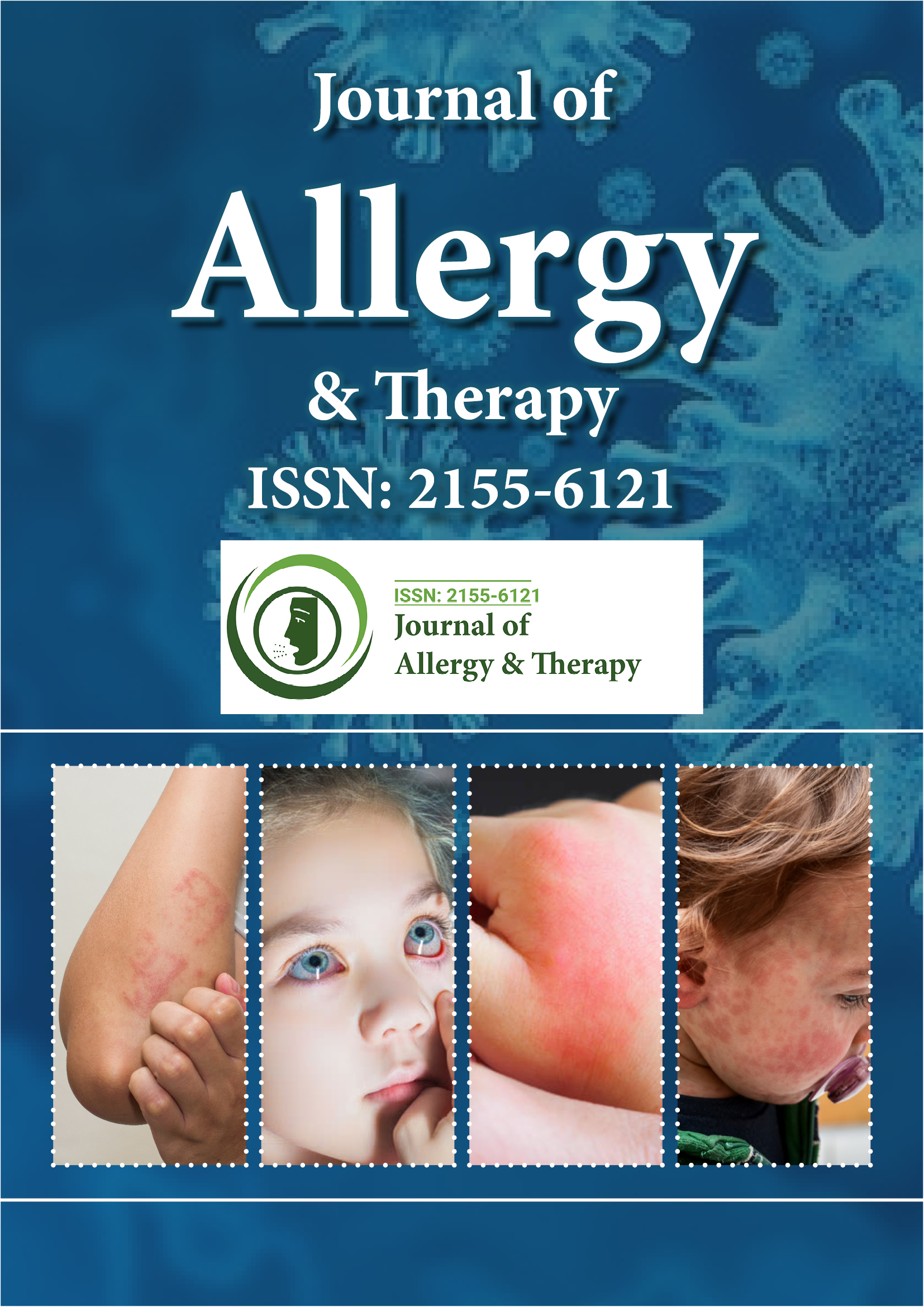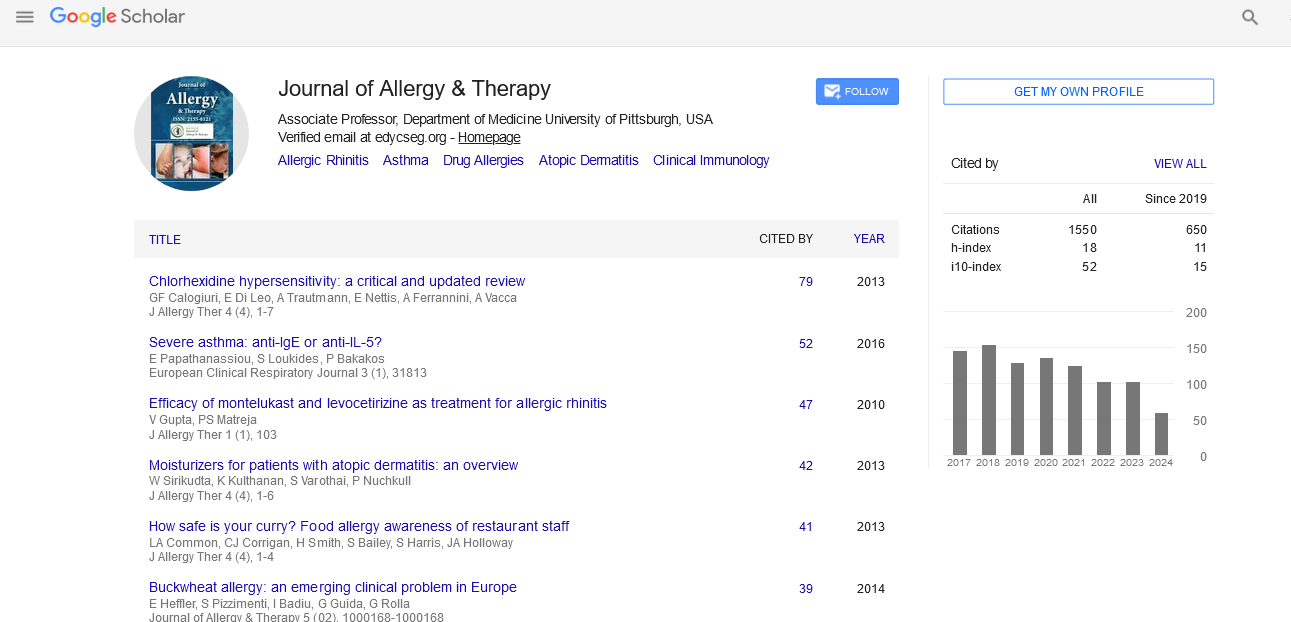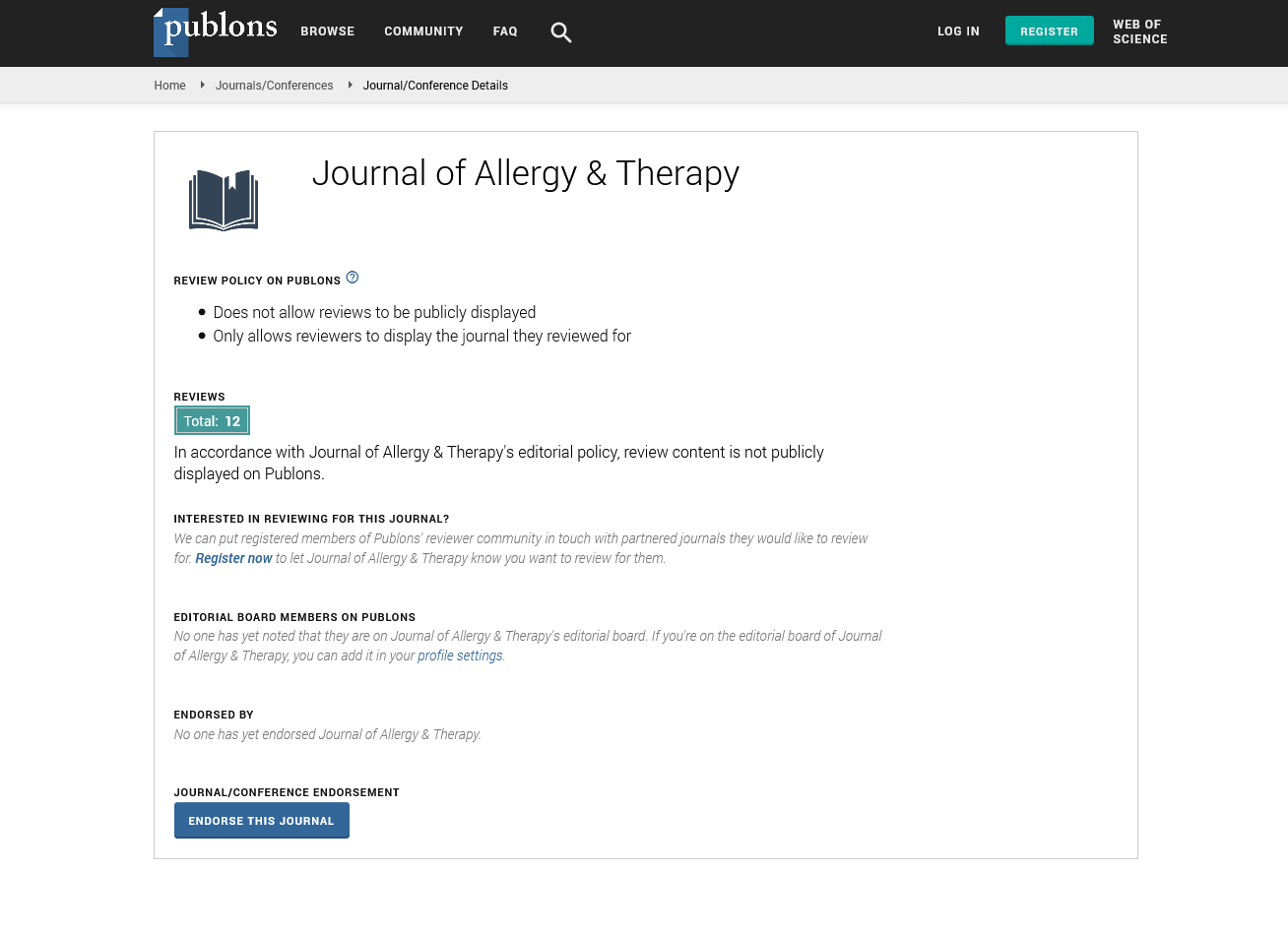Indexed In
- Academic Journals Database
- Open J Gate
- Genamics JournalSeek
- Academic Keys
- JournalTOCs
- China National Knowledge Infrastructure (CNKI)
- Ulrich's Periodicals Directory
- Electronic Journals Library
- RefSeek
- Hamdard University
- EBSCO A-Z
- OCLC- WorldCat
- SWB online catalog
- Virtual Library of Biology (vifabio)
- Publons
- Geneva Foundation for Medical Education and Research
- Euro Pub
- Google Scholar
Useful Links
Share This Page
Journal Flyer

Open Access Journals
- Agri and Aquaculture
- Biochemistry
- Bioinformatics & Systems Biology
- Business & Management
- Chemistry
- Clinical Sciences
- Engineering
- Food & Nutrition
- General Science
- Genetics & Molecular Biology
- Immunology & Microbiology
- Medical Sciences
- Neuroscience & Psychology
- Nursing & Health Care
- Pharmaceutical Sciences
Opinion Article - (2025) Volume 16, Issue 2
Aeroallergens and Their Widespread Impact on Respiratory Allergies Across Populations and Environments Globally
Lisa Beck*Received: 30-Apr-2025, Manuscript No. JAT-25-29452; Editor assigned: 02-May-2025, Pre QC No. JAT-25-29452; Reviewed: 16-May-2025, QC No. JAT-25-29452; Revised: 23-May-2025, Manuscript No. JAT-25-29452; Published: 30-May-2025, DOI: 10.35248/2155-6121.25.16.423
Description
Aeroallergens are airborne substances that can trigger allergic reactions in sensitive individuals. These allergens are typically small enough to be carried in the air and inhaled into the respiratory tract, where they may provoke symptoms ranging from mild irritation to severe asthma attacks. Common aeroallergens include pollen, mold spores, dust mites, pet dander and cockroach particles. The prevalence of aeroallergens and their associated health conditions has been rising steadily across the globe, affecting millions of people and creating a significant burden on public health systems. Understanding the sources, mechanisms and management of aeroallergens is essential for mitigating their impact and improving the quality of life for those affected.
One of the most widespread and studied groups of aeroallergens is pollen. Pollen grains are microscopic reproductive particles released by trees, grasses and weeds. Seasonal allergic rhinitis, also known as hay fever, is primarily caused by an immune response to airborne pollen. In spring, tree pollen dominates, while summer brings grass pollen and autumn is often marked by weed pollen such as ragweed. The concentration of pollen in the air varies with weather conditions, geography and vegetation types. Windy and dry days typically result in higher pollen counts, while rain can temporarily wash pollen out of the air.
Mold spores represent another major category of aeroallergens. Molds are fungi that release tiny spores into the air as part of their reproductive cycle. These spores can be found indoors and outdoors and thrive in damp, dark environments. Indoor molds often grow in bathrooms, basements, or anywhere moisture accumulates, while outdoor molds are commonly found in soil, rotting leaves and compost piles. Inhalation of mold spores can lead to allergic symptoms and exacerbate asthma, especially in individuals with compromised immune systems or chronic respiratory conditions. Unlike pollen, mold spores may be present year-round, particularly in humid climates.
House dust mites are microscopic arachnids that live in bedding, upholstered furniture, carpets and other soft furnishings. They feed on flakes of human skin and thrive in warm, humid conditions. Although the mites themselves are not airborne, their waste products and body fragments can become airborne through routine household activities and provoke allergic reactions in sensitive individuals. Dust mite allergy is a leading cause of perennial allergic rhinitis and is strongly associated with asthma development, particularly in children. Reducing exposure through the use of allergen-proof covers, regular washing of bedding in hot water and controlling indoor humidity can help manage symptoms.
Pet dander, composed of tiny flakes of skin shed by cats, dogs and other animals with fur or feathers, is a common indoor aeroallergen. Saliva and urine proteins can also contribute to allergic reactions. Contrary to popular belief, hypoallergenic pets do not completely eliminate the risk of allergy, as dander is produced by all animals to some extent. Cat allergens, in particular, are known for their small size and ability to remain suspended in the air for long periods. Even in homes without pets, pet allergens can be found due to transfer on clothing and belongings. Sensitization to pet dander can lead to symptoms ranging from nasal congestion and sneezing to asthma exacerbations.
Cockroach allergens are derived from the saliva, feces and decomposing bodies of cockroaches. These allergens are especially problematic in urban areas with poor sanitation and can become airborne as particles settle in household dust. Exposure to cockroach allergens has been linked to increased asthma morbidity, particularly among children living in inner-city environments. Cockroach control measures, such as maintaining cleanliness, sealing cracks and using bait traps or professional pest control, are essential in reducing exposure and minimizing allergic symptoms.
The body’s response to aeroallergens involves a hypersensitive immune reaction. In susceptible individuals, the immune system misidentifies harmless substances as threats and produces Immunoglobulin E (IgE) antibodies. Upon re-exposure, these antibodies trigger the release of inflammatory mediators such as histamine, leading to classic allergic symptoms like sneezing, nasal congestion, itchy eyes, wheezing and coughing. In more severe cases, exposure can lead to chronic sinusitis, otitis media, or asthma attacks, especially in genetically predisposed individuals.
Diagnosis of aeroallergen sensitivity is typically performed through skin prick testing or blood tests that measure specific IgE levels. Identifying the exact allergen is critical for targeted avoidance strategies and treatment planning. Management of aeroallergen-induced conditions often includes allergen avoidance, pharmacotherapy and immunotherapy. Antihistamines, decongestants, corticosteroids and leukotriene receptor antagonists are commonly prescribed to alleviate symptoms. Allergen immunotherapy, delivered via subcutaneous injections or sublingual tablets, can provide long-term relief by gradually desensitizing the immune system to specific allergens.
Environmental changes and global climate trends have also influenced aeroallergen exposure. Rising temperatures and increased carbon dioxide levels can enhance plant growth and extend pollen seasons, leading to higher concentrations of airborne allergens. Urbanization and pollution further exacerbate the effects of aeroallergens by increasing airway inflammation and making individuals more reactive to allergens. As a result, allergic diseases are becoming more common and severe in both developed and developing countries.
Conclusion
Education and awareness play a vital role in managing aeroallergen-related health issues. Individuals with known sensitivities should monitor local pollen counts, use air purifiers, avoid outdoor activities during high allergen periods and maintain clean indoor environments. Healthcare professionals, policymakers and researchers must continue working together to develop effective strategies for prevention, diagnosis and treatment. As aeroallergens remain a constant presence in our environment, comprehensive and personalized approaches will be key to improving outcomes and reducing the burden of allergic diseases worldwide.
Citation: Beck L (2025) Aeroallergens and Their Widespread Impact on Respiratory Allergies across Populations and Environments Globally. J Allergy Ther. 16:423.
Copyright: © 2025 Beck L. This is an open-access article distributed under the terms of the Creative Commons Attribution License, which permits unrestricted use, distribution and reproduction in any medium, provided the original author and source are credited


